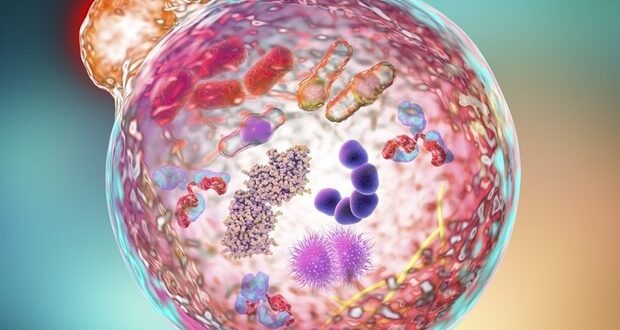Recycling in Cells Through Autophagy
Recycling takes place in our cells at all times through a process known as autophagy. In this process, cell components that are no longer needed are enclosed by membranes and broken down into their basic building blocks. This essential process prevents the formation of harmful aggregates and makes nutrients available again.
Discovery of the Conditions for Autophagy
A research team led by Prof. Dr. Claudine Kraft from the CIBSS Cluster of Excellence at the University of Freiburg and Dr. Florian Wilfling from the Max Planck Institute of Biophysics has discovered the conditions necessary for autophagy to start. By artificially creating these conditions, they were able to trigger the degradation of otherwise non-degradable molecules in yeast cells.
Promising Approach for Neurodegenerative Diseases and Cancer Treatments
Targeting autophagy in this way shows promise for promoting the degradation of aggregates that can form plaques in neurodegenerative diseases like Alzheimer’s. It also holds the potential to improve the efficacy of cancer treatments.
Identification of Weak Molecular Interactions
The researchers found that weak molecular interactions are essential for autophagy to begin. Receptor and adapter molecules must bind weakly to the material to be disposed of for autophagy to be triggered. If they bind too strongly, the process is not initiated.
Explanation through Computer Simulations and Experiments
Computer simulations and experiments on living yeast cells and human cells in cell culture helped researchers understand how weak binding of receptors leads to the initiation of autophagy. The weak binding allows receptors to remain mobile and form random clusters.
Phase Separation and Liquid Accumulation
When the point of critical concentration is reached, phase separation occurs. Adapter molecules come together and form a droplet, similar to oil in water. This liquid accumulation has different physical properties and serves as a flexible platform for all other molecules involved in autophagy.
Artificial Control of the Autophagy Process
To test their hypothesis, the researchers introduced modified virus particles into yeast cells. By ensuring weak binding of autophagy receptors to these particles, they were able to trigger the degradation of the viral protein. This demonstrates the potential for specific intervention in the autophagy of cargo molecules in living cells.
Sources: Journal reference: Licheva, M., et al. (2025). Phase separation of initiation hubs on cargo is a trigger switch for selective autophagy. Nature Cell Biology. doi.org/10.1038/s41556-024-01572-y.
 Mind Uncharted Explore. Discover. Learn.
Mind Uncharted Explore. Discover. Learn.


